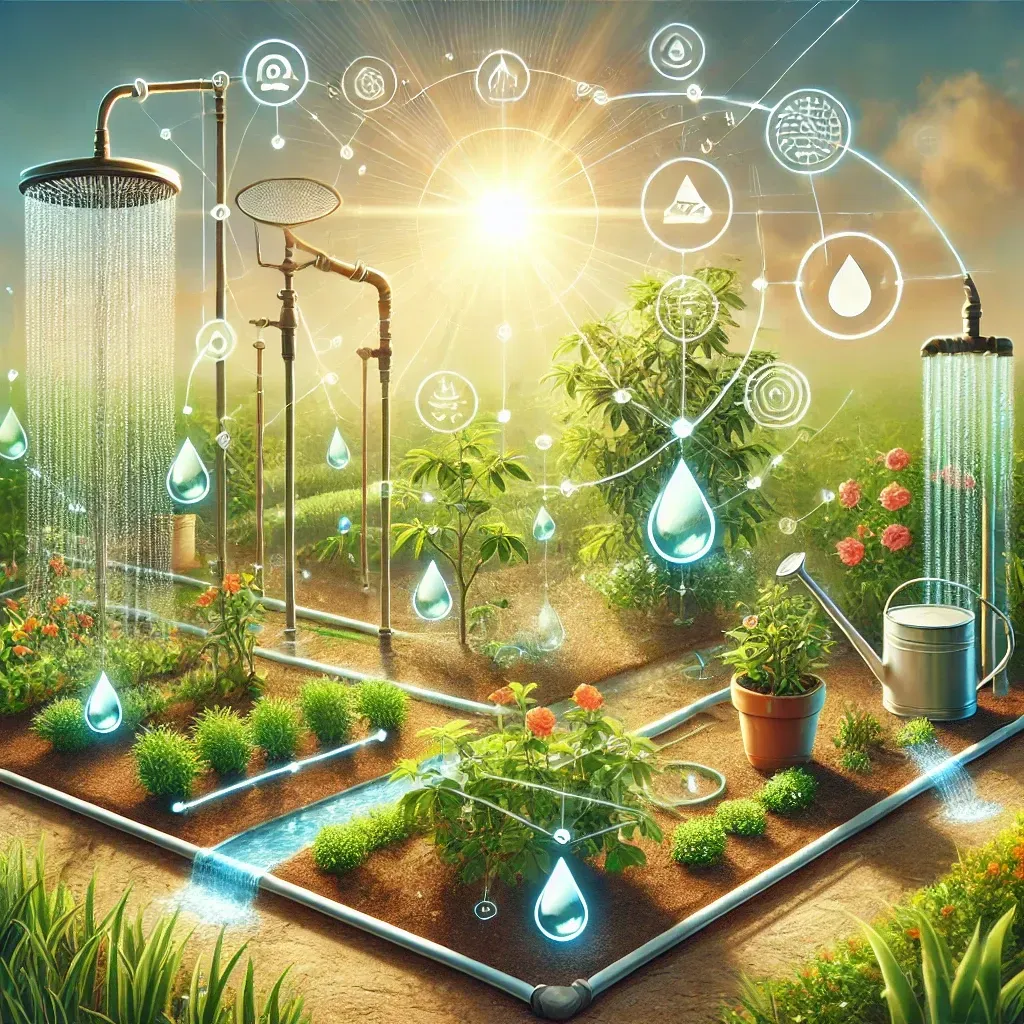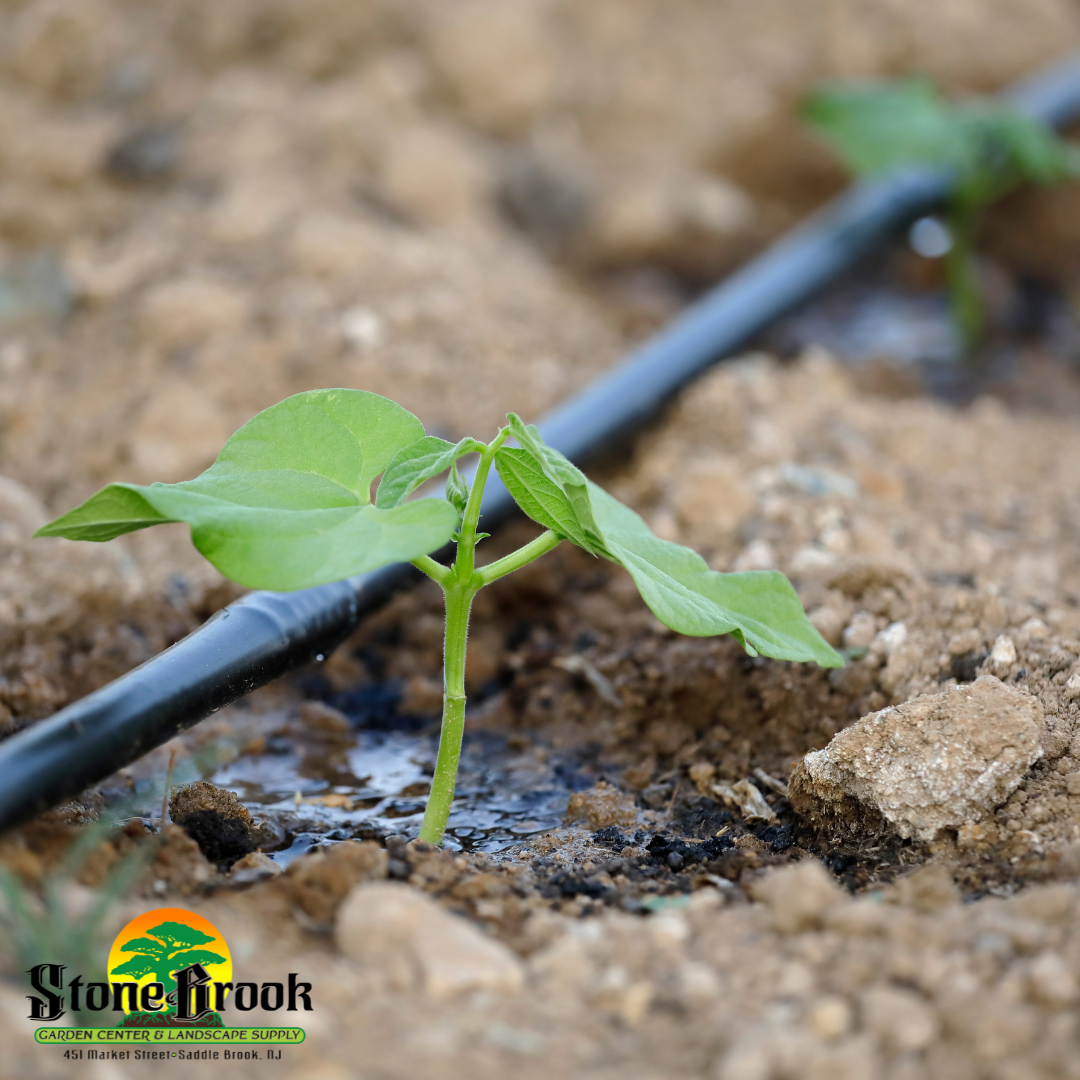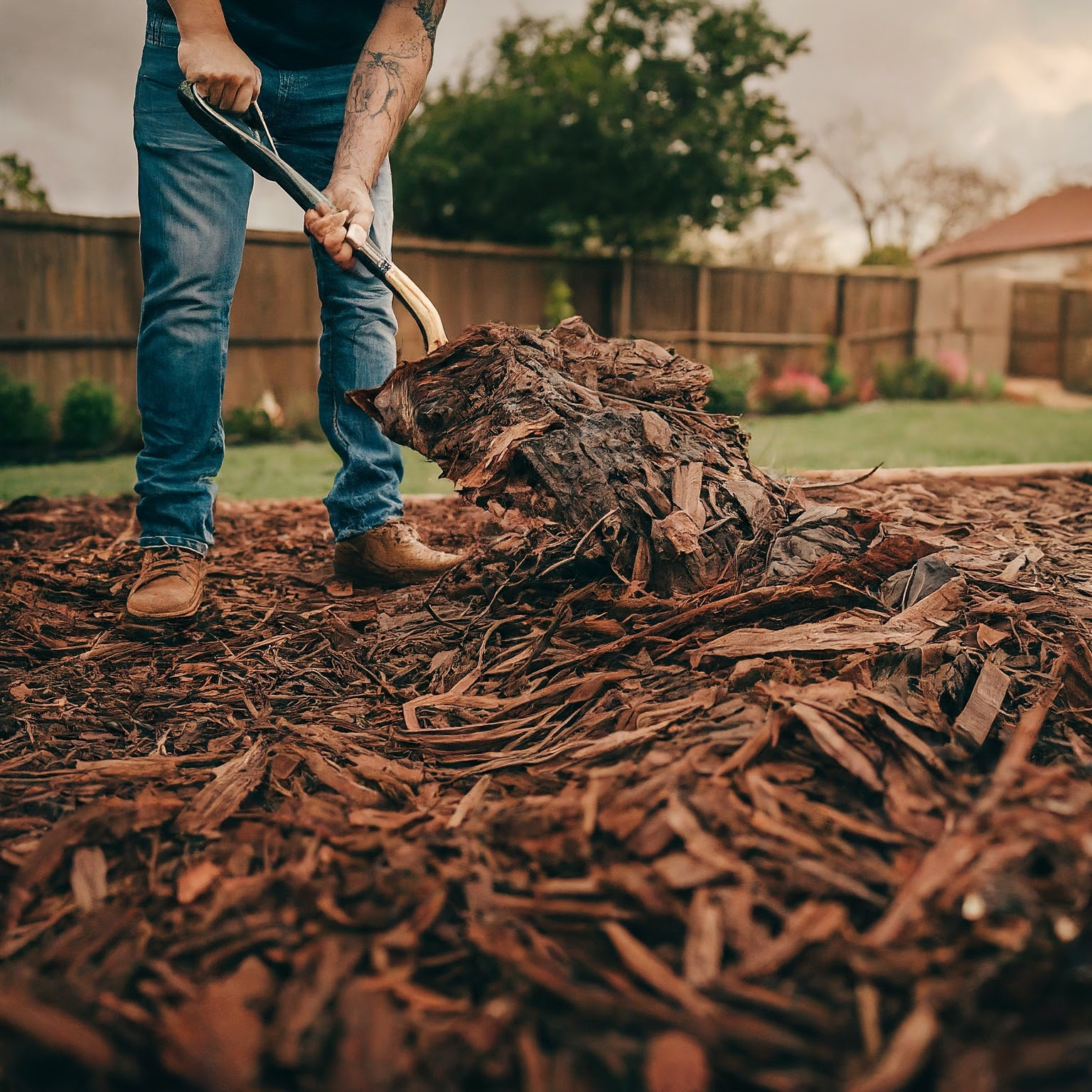Garden Center & Plant Nursery In Saddle Brook & Paramus NJ
Shop Online Pick-up in Store!
Gardening Tips & Insights from Your Trusted Garden Center In Paramus NJ
Explore Our Articles for Expert Advice on Gardening and Landscaping

Creative Irrigation Ideas for a Thriving Summer Garden
I. Introduction
As the summer sun climbs high and the days stretch longer, the thirst of our gardens grows deeper. Proper irrigation becomes not just a routine task, but a critical lifeline for our verdant companions. In the sweltering heat, when every drop counts, ensuring that our plants receive the right amount of water can mean the difference between a flourishing oasis and a parched plot.
This article delves into the art and science of hydration, exploring innovative and efficient irrigation methods designed to keep your garden thriving through the dog days of summer. From the simplicity of soaker hoses weaving through your beds to the technological marvel of smart watering systems, we’ll uncover a spectrum of solutions tailored to conserve water and nurture life. So, let’s turn the tap of knowledge and let the wisdom flow, irrigating our minds with strategies as refreshing as the water they channel to our cherished plants.

II. Drip Irrigation
A. What is Drip Irrigation?
Drip irrigation is a method of watering that delivers water directly to the base of the plant using a network of tubing, valves, and emitters. This system allows water to drip slowly to the roots of plants, either onto the soil surface or directly onto the root zone, through a small diameter tube. This targeted approach is designed to deliver the precise amount of water needed, reducing waste and maximizing efficiency.
B. Benefits of Drip Irrigation
Water Efficiency: Drip irrigation systems are over 90% efficient at allowing plants to use the water applied. This is a significant improvement over other forms of irrigation, which can be as low as 50-70% efficient.
Targeted Watering to Plant Roots: By delivering water at or near the root zones of plants, drip irrigation ensures that the water is used effectively and reaches the part of the plant that needs it most.
Reduction in Water Runoff and Evaporation: Drip irrigation minimizes runoff and evaporation by keeping water close to the ground and using it slowly, ensuring that every drop goes further.
C. Setting Up a Drip Irrigation System
To set up a drip irrigation system, you’ll need the following components:
Tubing: The main and sub-main lines that distribute water around the garden.
Emitters: Devices that control the rate of drip water release to plants.
Connectors: Fittings that connect tubes to each other and to the water source.
Step-by-step Installation Guide:
Plan your layout according to the garden’s needs, ensuring each plant will be adequately served by an emitter.
Lay out the tubing along the planned routes and cut to the required lengths.
Install emitters at positions corresponding to plant locations.
Connect the tubing to your water source with the appropriate connectors.
Test the system to ensure proper water flow and adjust as needed.
D. Maintenance Tips
Regular Checks for Clogs and Leaks: Inspect the system regularly for any blockages or damage that could affect water flow.
Seasonal Adjustments: Adjust the watering schedule and system layout as needed to accommodate new plantings or changes in weather patterns.

III. Soaker Hoses
A. What are Soaker Hoses?
Soaker hoses are a form of drip irrigation where the hose is designed to allow water to seep out slowly along its length. Made from porous materials, these hoses lie on the soil surface or beneath mulch, releasing water directly to the plant roots. They function by utilizing water pressure to exude moisture through tiny pores, providing a steady, low-volume water supply to garden plants.
B. Benefits of Soaker Hoses
Easy Installation and Use: Soaker hoses can be simply laid out across your garden and connected to a water source, making them one of the most user-friendly irrigation systems.
Even Water Distribution: They deliver water uniformly, ensuring that each plant receives an equal share of hydration.
Ideal for Garden Beds and Rows: Their flexibility and adaptability make soaker hoses perfect for long garden beds and orderly rows of plants.
C. Setting Up Soaker Hoses
When setting up soaker hoses, consider the following:
Choosing the Right Hose: Select a hose length that matches the size of your garden area and a quality that ensures durability.
Layout and Installation Tips:
Lay the hose along the rows of plants, ensuring it passes by each plant’s root zone.
Use garden staples to hold the hose in place if necessary.
Connect the hose to a water source, using a backflow preventer to keep your water supply clean.
Cover the hose with mulch to conserve water and protect it from UV damage.
D. Maintenance Tips
Checking for Leaks: Regularly inspect the hose for any signs of damage or leaks, which can disrupt the even flow of water.
Proper Storage When Not in Use: During the off-season, drain the hoses and store them in a cool, dry place to prevent cracking and deterioration.

IV. DIY Rainwater Harvesting Systems
A. What is Rainwater Harvesting?
Rainwater harvesting is the practice of collecting and storing rainwater from rooftops, land surfaces, or rock catchments using simple techniques such as jars and pots or more complex engineering structures. It’s an ancient method that’s gaining modern appeal as a sustainable way to conserve water. The collected water can be used for various purposes, including irrigation, which is especially beneficial during the dry summer months.
B. Benefits of Rainwater Harvesting
Sustainable and Eco-Friendly: Utilizing rainwater reduces the ecological footprint by decreasing the demand for water from lakes, rivers, and public water systems.
Cost-Effective: After the initial setup, the cost of rainwater is virtually free, saving money on water bills.
Reduces Dependency on Municipal Water: In times of drought or water restrictions, having a rainwater harvesting system ensures a continuous supply for your garden.
C. Building a DIY Rainwater Harvesting System
To build a DIY rainwater harvesting system, you’ll need:
Barrels: Food-grade rain barrels or large containers to store the water.
Diverters: Devices that direct water from downspouts to your barrels.
Filters: To keep debris and mosquitoes out of your stored water.
Step-by-step Guide to Setting Up:
Position your barrels under a downspout or at a spot where they can collect the most rain.
Install diverters on the downspouts to channel water into the barrels.
Attach filters to keep out debris and insects.
Ensure your barrels have a secure lid and an overflow valve.
Connect the barrels to your irrigation system or use a standalone spigot for manual watering.
D. Using Harvested Rainwater for Irrigation
Connecting to Your Garden Irrigation System: Use a pump or gravity-fed system to distribute the collected rainwater through your existing irrigation setup.
Best Practices for Usage: Test the pH and mineral content of the collected water to ensure it’s suitable for your plants. Avoid using harvested rainwater on edible plants unless it’s been properly treated to remove potential contaminants.

V. Additional Creative Irrigation Ideas
A. Wicking Beds
Wicking beds are an innovative gardening solution that utilizes a water reservoir below the soil surface to provide moisture to plants from the bottom up. This method capitalizes on the natural process of capillary action, where water “wicks” upwards through the soil, directly hydrating the root zone.
Benefits:
Water Conservation: Wicking beds can reduce water usage by up to 50% compared to traditional watering methods.
Consistent Moisture: They provide a steady supply of water, reducing the stress on plants from fluctuating moisture levels.
Low Maintenance: Once set up, wicking beds require less frequent watering, saving time and effort.
How to Set Up a Wicking Bed:
Construct a waterproof basin with a depth of about 12 inches, ensuring it has an overflow outlet at the top of the water reservoir level.
Fill the bottom with a layer of gravel or sand to act as the water reservoir.
Lay a permeable landscape fabric over the reservoir to separate it from the soil.
Add a layer of quality potting mix above the fabric.
Plant your garden, ensuring the roots reach down towards the moist soil.
Fill the reservoir with water, which will wick up to the roots as needed.
B. Ollas (Clay Pot Irrigation)
Ollas are unglazed clay pots buried within the garden bed. When filled with water, they slowly release moisture into the surrounding soil through their porous walls. This ancient irrigation technique is making a comeback in modern gardens.
Benefits:
Efficient Water Use: Ollas minimize evaporation and runoff, directing water to where it’s most needed.
Root Zone Targeting: They promote healthy plant growth by delivering water directly to the root zone.
Time-Saving: Ollas need to be refilled less often than daily watering, making them a convenient option for busy gardeners.
How to Use Ollas in Your Garden:
Bury the olla in the garden bed, leaving the neck exposed above the soil.
Fill the olla with water and cap it to prevent evaporation.
As the soil dries, water is drawn from the olla, maintaining a consistent moisture level.
Refill the olla as needed, typically once a week depending on weather conditions and soil type.
These creative irrigation ideas offer sustainable and efficient ways to maintain a lush summer garden. By harnessing the principles of capillary action and controlled release, wicking beds and ollas ensure that your plants stay hydrated with minimal waste and effort.

VI. Tips for Efficient Water Use in the Garden
A. Mulching
Mulching is a simple yet effective method to enhance water conservation in your garden. By covering the soil with a layer of mulch, you can significantly reduce evaporation, keeping the soil moist for longer periods. This not only saves water but also means less frequent watering sessions.
Benefits of Mulching for Water Retention:
Reduces water evaporation from the soil surface.
Moderates soil temperature, protecting roots from extreme heat.
Prevents weed growth, which competes with plants for water.
Types of Mulch to Use:
Organic mulches such as straw, wood chips, or compost, which improve soil quality as they decompose.
Inorganic mulches like stones or landscape fabric, which are more permanent and reflect heat away from the soil.

B. Watering Techniques
Efficient watering techniques are crucial for a thriving garden. They ensure that plants receive the moisture they need without wasting water.
Best Times of Day to Water:
Early morning or late afternoon/evening to minimize evaporation.
Avoid midday waterin
g when the sun is at its peak.
Avoiding Over-Watering:
Use a moisture meter or check the soil moisture manually before watering.
Employ drip irrigation systems for targeted watering at the root zone, reducing runoff and evaporation.
C. Plant Selection
Choosing the right plants can greatly impact your garden’s water efficiency.
Choosing Drought-Resistant Plants:
Opt for species that are naturally adapted to dry conditions, such as lavender or sedum.
Grouping Plants with Similar Water Needs:
Create hydrozones in your garden by grouping plants with similar water requirements. This allows for more targeted watering and prevents over-watering some plants while under-watering others.
Implementing these tips will not only contribute to a more sustainable garden but also ensure that your garden remains lush and vibrant throughout the summer season. Happy gardening!

VII. Conclusion
As we’ve explored throughout this article, efficient irrigation is not just a method; it’s a mindset that intertwines with the very essence of gardening. It’s about nurturing your garden with the right amount of water, at the right time, and in the right way. This careful balance ensures that every drop counts, contributing to a sustainable environment and a flourishing summer garden.
We encourage you to experiment with the various creative irrigation ideas we’ve discussed. Whether it’s through the use of drip systems, soaker hoses, or innovative mulching techniques, each method has the potential to transform your garden into a verdant oasis. Remember, the best irrigation method is the one that works in harmony with your garden’s unique ecosystem.
For those eager to embark on this journey of efficient watering, Stone Brook Garden Center is your ally. We invite you to visit us for a comprehensive range of irrigation supplies and to benefit from our expert advice. Our team is dedicated to helping you find the perfect solutions to keep your garden thriving all summer long.
In the end, the joy of witnessing your garden in full bloom, sustained by the life-giving force of water, is a reward in itself. So, let’s raise our watering cans to a season of growth, vitality, and the endless possibilities that lie in every seed and every soil.
Discover the enduring beauty of plants and flowers at Stone Brook Garden Center, where each piece is chosen for its freshness and vitality. From unique garden plants to stunning floral arrangements for any occasion, find the ideal way to express yourself through nature’s own artistry.
Contact Us
Stone Brook Garden Center & Landscape Supply
451 Market St, Saddle Brook, NJ 07663
Legal
Privacy Policy
Terms & Conditions
© Stone Brook Garden Center & Landscape Supply 2025
All Rights Reserved

